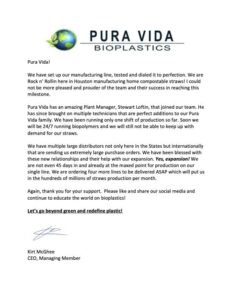


McDonald’s plans to “drastically” reduce the plastic in its Happy Meal toys worldwide by 2025. The burger giant said Tuesday it’s working with toy companies to develop new ideas, such as three-dimensional cardboard superheroes kids can build or board games with plant-based or recycled game pieces, the AP reports. McDonald’s said it’s also exploring using recycled plastic toys to make new restaurant trays. McDonald’s sells more than 1 billion toys each year. The company says the new goal will reduce virgin plastic use by 90% compared to 2018 levels.
Toys make up only a fraction of the plastic used by McDonald’s, though the company also aims to get 100% of its packaging from sustainable sources by 2025, NPR reports. “When packaging and plastic waste aren’t recovered or recycled correctly, it can have a negative impact on our planet, creating litter and pollution,” the company says. McDonald’s says it is working to reduce the use of items like plastic straws, bags, and cutlery and it hopes to boost the demand for recycled plastic by using it in trays.
Modern plastics are made from a wide range of polymers including polyethylene, PVC, and nylon, created from crude oil, natural gas, salt, coal, and in more recent years from bio-matter.
Most plastics are chemically inert and will not react chemically with other substances, making it suitable for storing a wide variety of substances without it dissolving the container itself. But because plastic doesn’t react with most other substances, this means it can take 400-500 years for it to decay.
When plastics were first invented they were marketed as an alternative to ivory and horn, obtained through the slaughter of elephants and other animals. The discovery was considered revolutionary. For the first time, human manufacturing was not constrained by the limits of nature. Humans could create new materials. It was also considered that this development helped not only people but also the environment.
Plastic straws are being adopted throughout the world and many plastic straw producers are switching to polylactic acid (PLA )plastic straws.
To biodegrade, PLA requires a laundry list of conditions to effectively break down.
Specifically – oxygen, a temperature of 140+ degrees, and a 2/3 cocktail of organic substrate.
You cannot expect your PLA straw to biodegrade in your local dump, let alone your backyard compost heap.
Pura Vida straws to the rescue! Our straws break down naturally starting in as little as 30 days.
